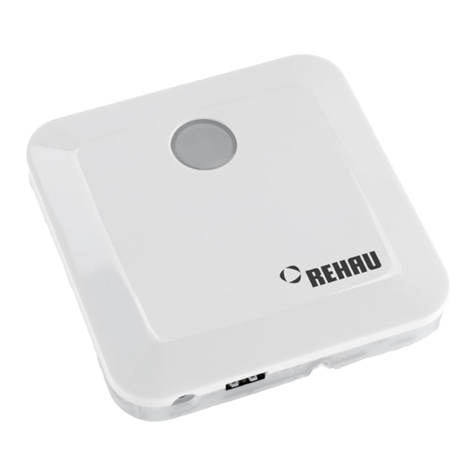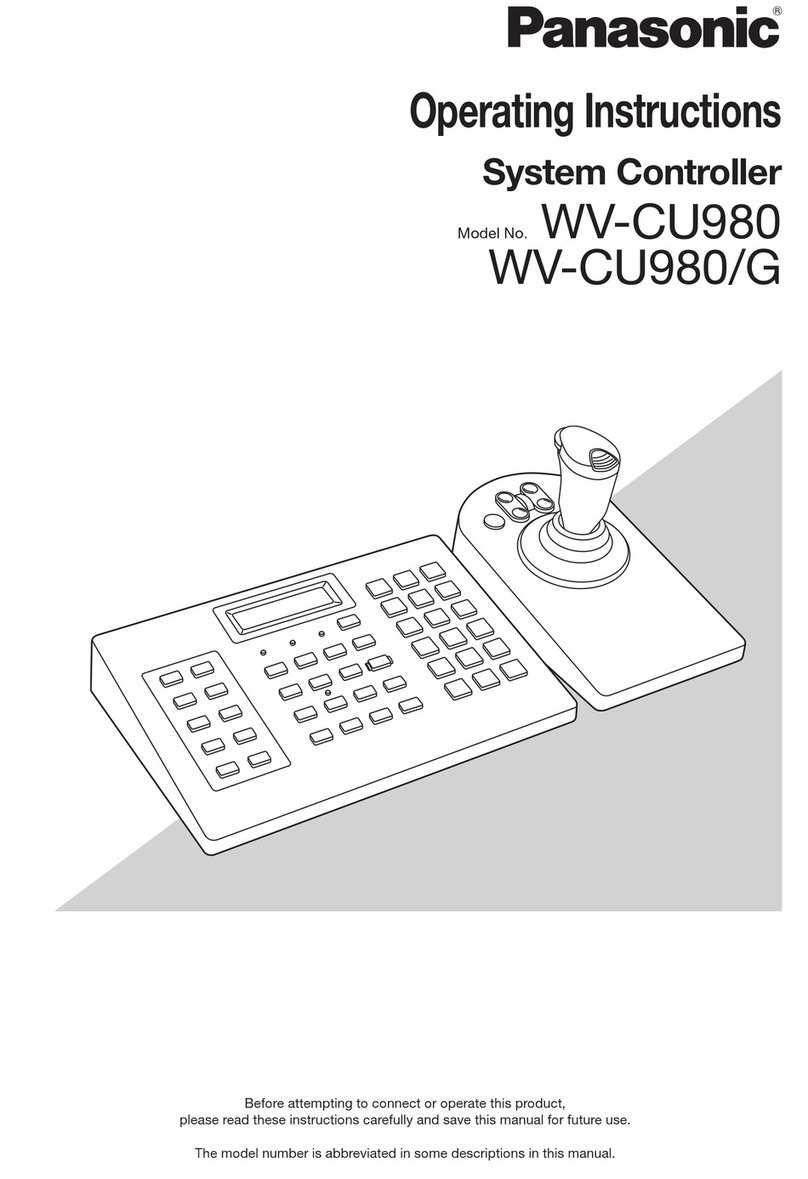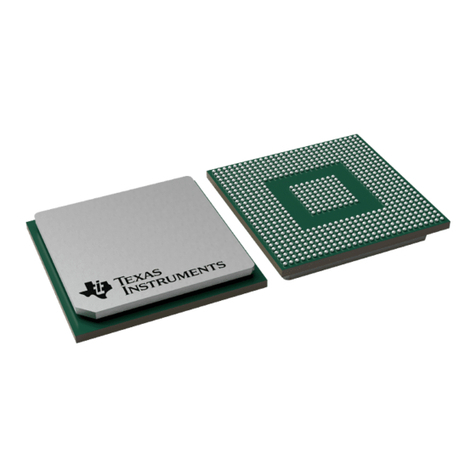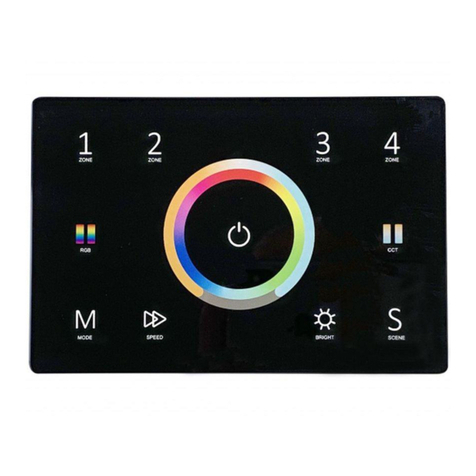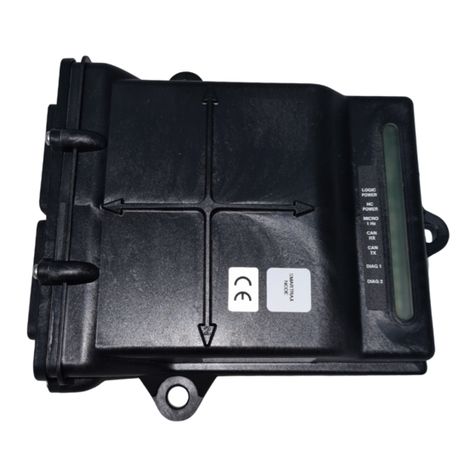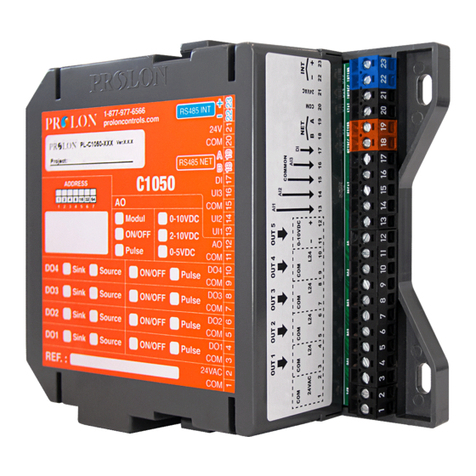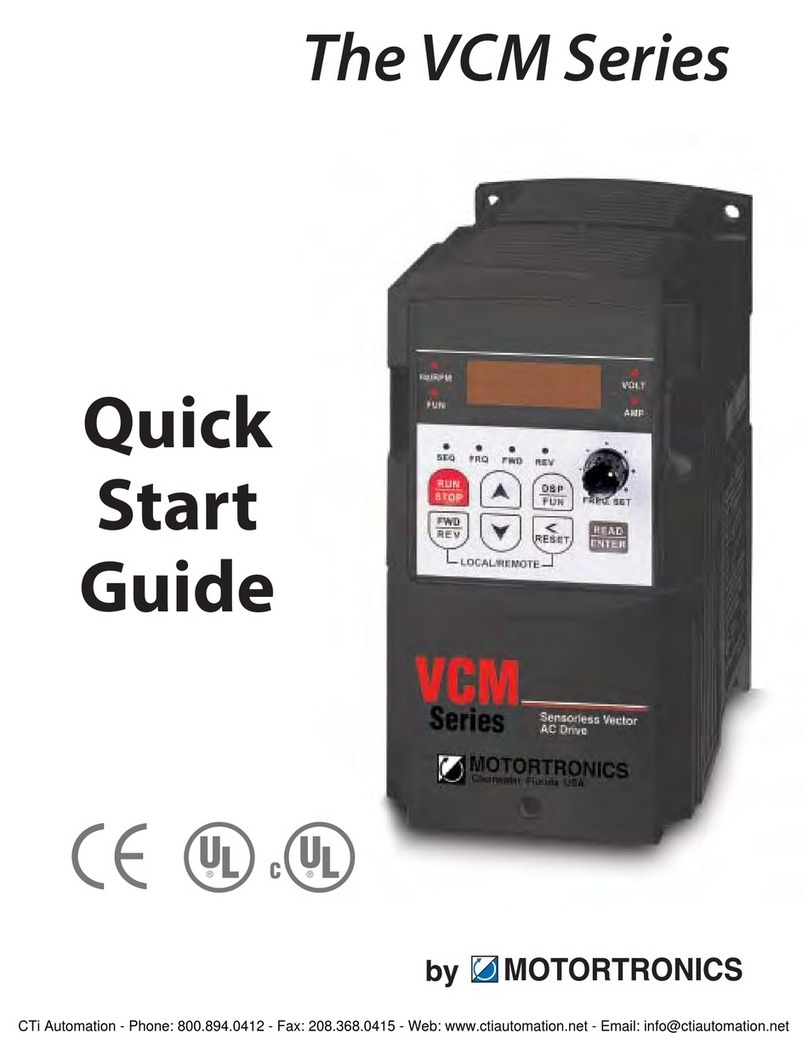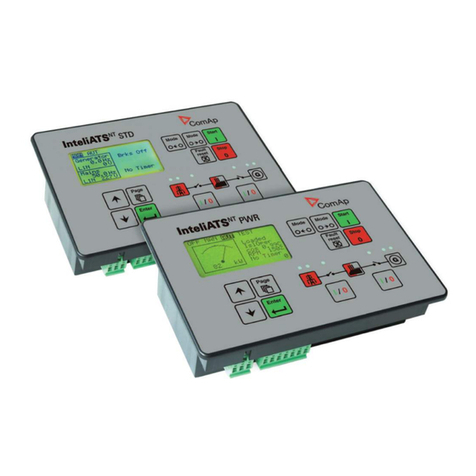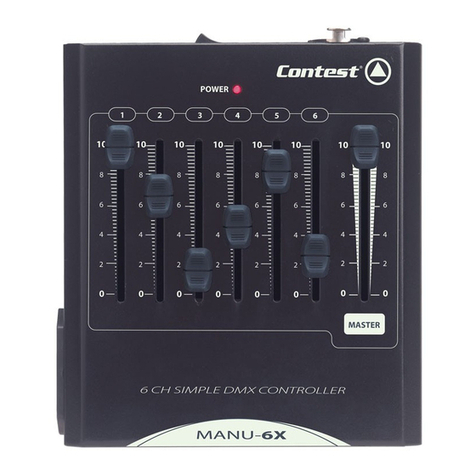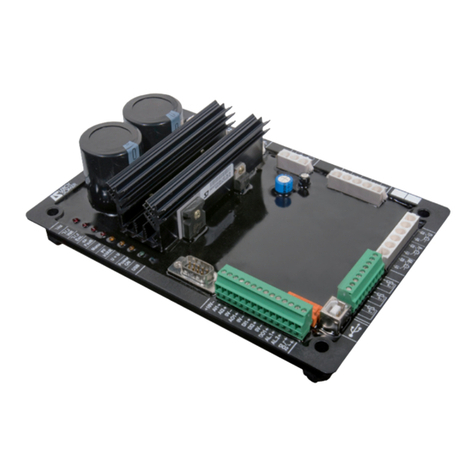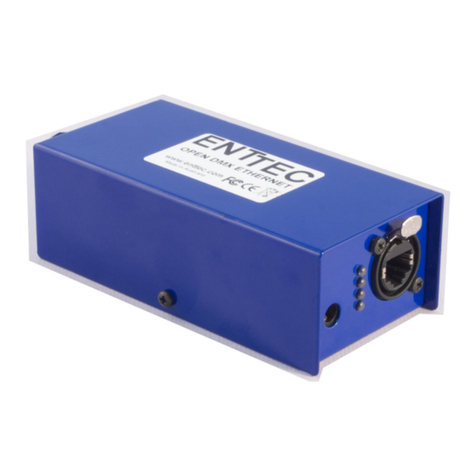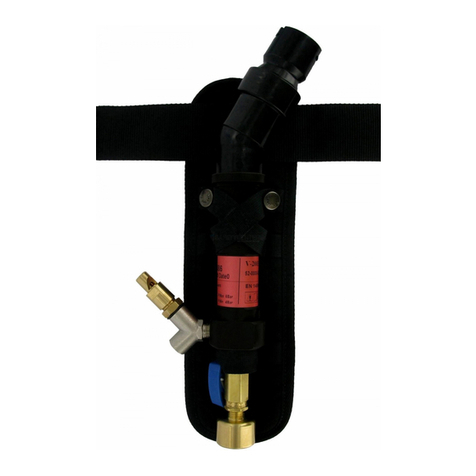ROBWAY RCI-4100 Instruction Manual

LSI
-
Robway
Pty L
imited
, 32 West Thebarton Road, Thebarton, South Australia, 5031
Phone: +61 (0) 8 8238 3500 Fax: +61 (0) 8 8352 1684
www.lsirobway.com.au
RCI-4100 Tension-Based System
Operation and Installation
SINGLE / TWIN WINCH
STRUT BOOM CRANE
MAN-1111 Rev H


OPERATION AND INSTALLATION
RCI-4100 SYSTEM
MAN-1111 Rev H ©Copyright 2015 LSI-Robway Pty Ltd
CONTENTS
IMPORTANT SAFETY NOTICES.......................................................................................................................... 9
1. SYSTEM DESCRIPTION................................................................................................................................11
1.1. GENERAL ....................................................................................................................................................11
1.2. CAPABILITIES ..............................................................................................................................................11
1.3. HAZARDOUS AREA ......................................................................................................................................11
1.4. AVAILABLE OPTIONS ...................................................................................................................................11
1.5. REFERENCES ...............................................................................................................................................11
1.6. LIMITED PRODUCT WARRANTY....................................................................................................................12
1.7. INTENDED AUDIENCE...................................................................................................................................12
1.8. PERSONNEL QUALIFICATIONS ......................................................................................................................12
2. INSTALLATION..............................................................................................................................................13
2.1. SETTING UP THE CRANE ...............................................................................................................................13
2.2. POWER SUPPLY ...........................................................................................................................................13
2.3. INSTALLING BOOM COMPONENTS ................................................................................................................13
2.3.1. Boom Angle Sensor (EEx d).................................................................................................................14
2.3.2. Tension Cell Type................................................................................................................................15
2.3.3. Single Sheave Dynamometer with Load Pin .........................................................................................16
2.3.4. Telescopic Boom Length Sensor...........................................................................................................17
2.3.5. Anti-Two-Block (Optional Item)...........................................................................................................18
2.3.6. Cabling (Sensors)................................................................................................................................19
2.3.7. Display Unit (Ex ib).............................................................................................................................20
2.3.8. Hazardous Area Control Unit (if not Safe Area)...................................................................................20
2.3.9. Setting DIP Switches for Cable Length.................................................................................................21
2.3.10. Cable Glands ......................................................................................................................................22
2.3.11. Safe Area Control Unit (if not hazardous area) ....................................................................................22
2.3.12. Cabling Instructions ............................................................................................................................23
2.3.13. Earthing..............................................................................................................................................24
2.4. SWITCH INPUTS ...........................................................................................................................................24
2.5. RELAY OUTPUTS .........................................................................................................................................24
2.5.1. MOTION-CUT OUTPUT RL-1 ............................................................................................................24
2.6. INSTALLING SLEW RING COMPONENTS.........................................................................................................25
2.6.1. Restricted Slew Zone Encoder..............................................................................................................25
2.6.2. Proximity Switch (For optional Restricted Slew Zone feature) ..............................................................26
2.7. INSTALLING WINCH COMPONENTS ...............................................................................................................27
2.7.1. Hook Height Winch Encoder................................................................................................................27
3. OPERATING INSTRUCTIONS......................................................................................................................29
3.1. APPLYING POWER TO THE RCI-4100.............................................................................................................29
3.2. TURNING OFF THE RCI-4100 .......................................................................................................................29
3.3. OPERATING SCREEN ....................................................................................................................................30
3.4. DISPLAY FUNCTIONS ...................................................................................................................................31
3.4.1. ALPHANUMERIC LCD SCREEN AND ALARM LED INDICATORS ...................................................31
3.4.2. 4-DIGIT LCD SCREENS.....................................................................................................................33
3.4.3. ACTIVE WINCH and ATB LED INDICATORS ....................................................................................33
3.4.4. FUNCTION PUSH BUTTONS.............................................................................................................34
3.5. RESTRICTED SLEW ZONE MONITORING –OPTIONAL FEATURE ......................................................................34
3.6. WIND SPEED MONITORING –OPTIONAL FEATURE.........................................................................................34
3.7. WIND DIRECTION –OPTIONAL FEATURE ......................................................................................................34
3.8. GROSS OVER-MOMENT PROTECTION (GOP) –OPTIONAL FEATURE................................................................34
3.9. TILT SENSING -OPTIONAL FEATURE.............................................................................................................35
3.10. HOOK HEIGHT –OPTIONAL FEATURE .......................................................................................................35
4. DATA LOGGING AND DATA DOWNLOADING ........................................................................................37
5. UPLOADING CRANE SOFTWARE USING SD CARD................................................................................39
6. FUNCTION CODE DESCRIPTIONS .............................................................................................................41

OPERATION AND INSTALLATION
RCI-4100 SYSTEM
MAN-1111 Rev H ©Copyright 2015 LSI-Robway Pty Ltd
6.1. EXIT CALIBRATION MODE ...........................................................................................................................41
6.2. MAIN LOAD.................................................................................................................................................41
6.2.1. View Calibrated Main Load.................................................................................................................41
6.2.2. Calibrate Light Main Load ..................................................................................................................41
6.2.3. Calibrate Heavy Main Load.................................................................................................................41
6.3. AUX LOAD ..................................................................................................................................................41
6.3.1. View Calibrated Aux Load...................................................................................................................41
6.3.2. Calibrate Light Aux Load ....................................................................................................................41
6.3.3. Calibrate Heavy Aux Load...................................................................................................................41
6.4. ANGLE ........................................................................................................................................................41
6.4.1. View Uncalibrated Angle Input............................................................................................................41
6.4.2. View Calibrated Angle Input................................................................................................................41
6.4.3. Calibrate Low Angle............................................................................................................................41
6.4.4. Calibrate High Angle...........................................................................................................................42
6.5. LENGTH (TELESCOPIC CRANES ONLY)......................................................................................................42
6.5.1. View Uncalibrated Length Input ..........................................................................................................42
6.5.2. View Calibrated Length Input ..............................................................................................................42
6.5.3. Calibrate Short Length ........................................................................................................................42
6.5.4. Calibrate Long Length.........................................................................................................................42
6.6. VIEW UNCALIBRATED TRANSDUCER 1INPUT................................................................................................42
6.7. VIEW UNCALIBRATED TRANSDUCER 2INPUT................................................................................................42
6.8. OFFSET AND GAIN ADJUSTMENT ...............................................................................................................42
6.8.1. Set Gain and Offset for Channels 1 to 8 ...............................................................................................43
6.9. NUMBER OF SENSOR SAMPLES TO AVERAGE.................................................................................................44
6.10. LOAD CHART VIEW MODE .......................................................................................................................44
6.11. VIEW DIGITAL INPUTS..............................................................................................................................44
6.12. SET YEAR ................................................................................................................................................44
6.13. SET DAY AND MONTH..............................................................................................................................44
6.14. SET TIME.................................................................................................................................................44
6.15. DOWNLOAD LOGGER CONTENTS TO PC OR SD CARD................................................................................44
6.16. ERASE LOGGER CONTENTS.......................................................................................................................45
6.17. ALTER CALIBRATION DATA .....................................................................................................................45
6.18. CLEAR ALL CALIBRATION DATA –USE EXTREME CAUTION!..............................................................46
6.19. MAIN WINCH SLACK ROPE THRESHOLD ...................................................................................................46
6.20. AUX WINCH SLACK ROPE THRESHOLD .....................................................................................................46
6.21. USER VARIABLES (SWL %ALARMS,MOTION CUT)..................................................................................46
6.22. USER VARIABLES (CRANE GEOMETRY) ....................................................................................................46
6.23. USER VARIABLES (DATA LOGGING SETUP PARAMETERS)..........................................................................46
6.24. LOAD /ANGLE CORRECTION ....................................................................................................................46
6.25. MAIN WINCH RIGGING SWL....................................................................................................................47
6.26. AUXILIARY WINCH RIGGING SWL ...........................................................................................................47
6.27. BOOM HEIGHT OFFSET.............................................................................................................................47
6.28. METRIC/IMPERIAL UNITS SWITCHING .......................................................................................................47
6.29. TIME DELAY FOR MOTION CUT RETURN...................................................................................................47
6.30. SLEW ENCODER (IF APPLICABLE) ..............................................................................................................47
6.30.1. View Slew Encoder Raw Counts...........................................................................................................47
6.30.2. Counts per 360deg slewing of crane.....................................................................................................47
6.30.3. Slew Encoder direction........................................................................................................................47
6.31. HOIST ROPE FRICTION COMPENSATION.....................................................................................................47
7. CALIBRATION ...............................................................................................................................................49
7.1. CALIBRATION MODE....................................................................................................................................49
7.1.1. Entering Calibration Mode..................................................................................................................49
7.1.2. Using Calibration Functions................................................................................................................49
7.2. TOOLS/ITEMS REQUIRED FOR CALIBRATION: ................................................................................................50
7.3. MAP OF CALIBRATION (SUGGESTED ORDER): ...............................................................................................50
7.4. CALIBRATION PROCEDURE...........................................................................................................................50
7.4.1. Check/set year, day/month and time.....................................................................................................51
7.4.2. Check / Set the following: ....................................................................................................................51
7.4.3. Configuring User Variables.................................................................................................................51
7.4.4. Verifying Operation of Sensors............................................................................................................51
7.4.5. Calibrating Boom Angle ......................................................................................................................52

OPERATION AND INSTALLATION
RCI-4100 SYSTEM
MAN-1111 Rev H ©Copyright 2015 LSI-Robway Pty Ltd
7.4.6. Calibrating Load on the MAIN Winch (without Friction Compensation)...............................................53
7.4.7. Calibrating Load on the AUX Winch (without Friction Compensation).................................................53
7.4.8. Calibrating Load on the MAIN Winch (with Friction Compensation)....................................................54
7.4.9. Calibrating Load on the AUX Winch (with Friction Compensation) .....................................................54
7.4.10. Using Load/Angle Correction Function................................................................................................55
7.4.11. Set Main Winch Rigging SWL ..............................................................................................................56
7.4.12. Set Aux Winch Rigging SWL ................................................................................................................56
7.4.13. Slew Encoder Operation (If Installed)..................................................................................................56
7.4.14. Testing the Slack Rope Function ..........................................................................................................56
7.5. POST CALIBRATION CHECKS ........................................................................................................................57
8. TROUBLESHOOTING ...................................................................................................................................59
8.1. EXAMPLE PROBLEMS AND POSSIBLE CAUSES................................................................................................60
8.1.1. Problems That Produce Error Codes ...................................................................................................60
8.1.2. Error Codes Summary .........................................................................................................................62
8.1.3. Problems That Do Not Produce Error Codes .......................................................................................63
8.2. PROBLEMS WITH DIGITAL INPUTS,DIGITAL OUTPUTS AND RELAY OUTPUTS..................................................64
8.2.1. Description of Digital Inputs, Digital Outputs and Relay Outputs.........................................................64
8.2.2. What are the inputs and outputs on this crane? ....................................................................................64
8.2.3. Troubleshooting Digital Inputs ............................................................................................................65
8.2.4. Troubleshooting Digital Outputs..........................................................................................................66
Troubleshooting Relay Outputs...........................................................................................................................67
8.3. SENSOR REPLACEMENT................................................................................................................................68
8.4. FUSE REPLACEMENT....................................................................................................................................69
9. INSPECTION ...................................................................................................................................................71
9.1. PRE-INSTALLATION......................................................................................................................................71
9.2. POST-INSTALLATION....................................................................................................................................72
9.3. POST-COMMISSIONING .................................................................................................................................72
9.3.1. Detailed Inspection..............................................................................................................................72
9.3.2. Periodic Inspection..............................................................................................................................73
9.3.3. Visual Inspection from Floor Level ......................................................................................................73
9.4. INSPECTION AND TEST SCHEDULE ................................................................................................................74
10. MAINTENANCE..........................................................................................................................................75
10.1. CHECKLIST ..............................................................................................................................................75
10.2. REMOVAL OF ELECTRICAL EQUIPMENT.....................................................................................................75
10.3. MAINTENANCE WORK IN HAZARDOUS AREAS ..........................................................................................76
10.4. MAINTENANCE WORK IN NON-HAZARDOUS AREAS ..................................................................................76
10.5. MODIFICATION OR REPAIR .......................................................................................................................76
10.6. INSPECTION AFTER MAINTENANCE ...........................................................................................................76
10.7. RECORDS.................................................................................................................................................76
10.8. PRINTED CIRCUIT BOARD (PCB) HANDLING .............................................................................................76
10.9. CUFRCI4100 FLAMEPROOF CONTROLLER MATING SURFACES PRECAUTIONS ...........................................76
11. GENERAL SPECIFICATIONS...................................................................................................................77


OPERATION AND INSTALLATION
RCI-4100 SYSTEM
MAN-1111 Rev H ©Copyright 2015 LSI-Robway Pty Ltd
LIST OF APPENDICES
APPENDIX A, Safety and Installation Instructions, Model 4120 RCI-4100IS Display Barrier 81
APPENDIX B, Declaration of Conformity, RCI-4100IS Hazardous Area Rated Capacity Indicator System 93
APPENDIX C, ATEX EC Type-Examination Certificate 101
APPENDIX D, IECEX Certificate of Conformity, Display Module Type RCI-4100IS 105
APPENDIX E, IECEX Certificate of Conformity, Model 4120 Power Supply and I2C Barrier 109
APPENDIX F, Data Logging 113
APPENDIX G, Cable Gland Installation Instructions 127
APPENDIX H, Restricted Slew Zone Monitoring Option 131
APPENDIX I, Wind Speed Monitoring Option 139
APPENDIX J, Wind Direction Monitoring Option 143
APPENDIX K, Automatic Gross Overload Option 149
APPENDIX L, Tilt Sensing Option 157
APPENDIX M, Hook Height DISRCI4100 Display Option 163
APPENDIX N, System Drawings 169
APPENDIX O, Hook Height and Winch Speed RCI1550 Display Option 181
ATTACHMENTS, RCI System Configuration Documents
VERSION HISTORY
Version Issue Date Description
A (not issued) Initial draft
B 25Oct11 Minor formatting changes
C 17Feb12 Sect 4.4.1 FLASHING changed to ON. LED trip point thresholds described as
typical with reference to function codes. Removed specific Function code
references from body. Sect 8.3 Sensor replacement added. Datalogging Appendix
F, miscellaneous updates.
D 28May12 RCI-4100 Declaration of Conformity updated to RCI-4100 Declaration Rev G.
E 20Aug12 Revised Sections 2 to 8. Added Appendices J and H. Various minor changes.
RCI-4100 Declaration of Conformity updated to Rev H. RF Transmitter Caution
added.
F 14Jan14 Company Name Change
G 27 Jan 15 Minor edits for errata
H 27 Feb 15 Winch Speed and Hook Height Appendix added
Friction compensation information added


OPERATION AND INSTALLATION
RCI-4100 SYSTEM
MAN-1111 Rev H ©Copyright 2015 LSI-Robway Pty Ltd Page 9
Important Safety Notices
Notes, Cautions and Warnings are presented to aid in understanding and operating the equipment or
to protect personnel and equipment. At all times relevant codes applicable to location of service must
be adhered too.
A “Note” is an advisory or illustrative statement and does not contain any mandatory statements.
A “Caution” is used where non-compliance with text may result in damage to equipment.
A “Warning” is used where non-compliance with text may result in injury to, or death of, personnel.
NOTE: This Rated Capacity Indicator is fitted to assist the crane operator. This Rated
Capacity Indicator is not a substitute for operator judgement, experience or safe crane
operation. At all times the driver is ultimately responsible for safe crane operation.
The operator should, prior to operation of the crane, read this manual carefully and
thoroughly and shall ensure that all operational instructions and warnings are
understood and complied with.
Proper system operation requires the operator to select the proper crane setup and
working configuration
WARNING: THE RCI-4100IS SYSTEM IS INTENDED FOR USE IN A GROUP IIB ZONE 1
EXPLOSIVE GAS ATMOSPHERE.
WARNING: THE RCI-4100 SYSTEM IS A CRANE DEVICE WHICH WARNS THE
OPERATOR OF IMPENDING OVERLOAD CONDITIONS AND OVER-HOIST
CONDITIONS WHICH COULD CAUSE DAMAGE TO PROPERTY, CRANE
AND PERSONNEL.
PROVIDED WARNINGS ARE NOT EXCLUSIVE, AS LSI-ROBWAY COULD
NOT POSSIBLY KNOW, EVALUATE AND ADVISE SERVICE PEOPLE OF
ALL CONCEIVABLE WAYS IN WHICH SERVICE MIGHT BE PERFORMED OR
ALL POSSIBLE ASSOCIATED HAZARDOUS CONSEQUENCES.
ACCORDINGLY, ANYONE WHO USES SERVICE PROCEDURES OR TOOLS
WHICH ARE NOT RECOMMENDED BY LSI-ROBWAY MUST FIRST SATISFY
THEMSELVES TO THEIR SUITABILITY AND THAT EITHER PERSONNEL
SAFETY OR EQUIPMENT SAFETY WILL BE JEOPARDISED BY THE
SELECTED METHOD.
CAUTION: SAFE, RELIABLE OPERATION OF LSI-ROBWAY SYSTEMS REQUIRES THE
SYSTEMS TO BE MAINTAINED IN A PROPER MANNER AND SERVICED BY
TECHNICALLY TRAINED PERSONNEL USING TRADE (OR PROFESSION)
RECOGNISED SERVICE PROCEDURES AND CORRECT TOOLS FOR THE
PURPOSE.

OPERATION AND INSTALLATION
RCI-4100 SYSTEM
MAN-1111 Rev H ©Copyright 2015 LSI-Robway Pty Ltd Page 10
CAUTION: THE SYSTEM IS EQUIPPED WITH AN OVER-RIDE WHICH BYPASSES
ALARMS AND MOTION CUT FUNCTION AT WHICH TIME THE SYSTEM CAN
NO LONGER WARN OF IMPENDING OVERLOAD AND MUST ONLY BE
OPERATED STRICTLY IN ACCORDANCE TO THE CRANE
MANUFACTURER’S SETUP AND OPERATION PROCEDURES. OPERATION
OF THIS KEY IS FOR AUTHORISED PERSONNEL ONLY WHO SHALL BE
SOLELY RESPONSIBLE FOR ITS USE.
CAUTION: MOTION LIMITERS MAY HAVE BEEN FITTED TO STOP THOSE FUNCTIONS
THAT WILL INCREASE RADIUS AND HOIST-UP IF THE LOAD-CHART IS
EXCEEDED. THIS FEATURE IS PROVIDED AS AN AID TO SAFER CRANE
OPERATION.
IN CERTAIN SITUATIONS, SUCH AS CRANE SETUP, THE CRANE
OPERATOR MAY NEED TO ‘OVER-RIDE’ THE MOTION LIMITERS. AT
THESE TIMES, THE SYSTEM CAN NO LONGER WARN OF OVERLOAD AND
THE CRANE MUST ONLY BE USED IN STRICT ACCORDANCE TO THE
CRANE MANUFACTURER’S SETUP AND OPERATION PROCEDURES.
PROPER SYSTEM OPERATION REQUIRES THE OPERATOR TO
CORRECTLY PROGRAM THE LSI-ROBWAY SYSTEM TO MATCH CRANE
SETUP AND WORKING CONFIGURATION.
CAUTION: HIGH TENSILE BOOMS REQUIRE PROPER WELDING PROCEDURE
SPECIFICATIONS. OBTAIN SPECIALIST ASSISTANCE WHEREVER
APPLICABLE.
CAUTION: RADIO FREQUENCY EMITTING EQUIPMENT SHOULD NOT BE PLACED
NEAR THE RCI-4100 CONTROLLER, DISPLAY, CABLING OR SENSORS AS
IT MAY CAUSE INTERFERENCE DEPENDING ON THE TYPE, POWER
OUTPUT AND OTHER CHARACTERISTICS OF THE EQUIPMENT.

OPERATION AND INSTALLATION
RCI-4100 SYSTEM
MAN-1111 Rev H ©Copyright 2015 LSI-Robway Pty Ltd Page 11
1. System Description
1.1. General
This manual contains general information, installation, operation, calibration, maintenance and fault-
finding information for the RCI-4100 Rated Capacity Indicating System to suit a Strut Boom Crane
using Tension Based Load Measurement with one or more system components located in a
hazardous area.
Applicable General Arrangement (GA) drawings and system wiring details can be found in refer RCI
System Configuration Documents in Attachments.
1.2. Capabilities
The RCI-4100 once installed and setup, is a semi-automatic Rated Capacity Indicator which provides
a display of the following functions:
•Safe Working Load (SWL)
•Boom Length
•Boom Angle
•Hoist Rope Falls
•Duty (or Sea-State)
•Time and Date
•Hook Radius
•Actual Load
•Actual Load as a Percentage of SWL
•Visual and audible alarms on warnings, motion-cut, and max high boom angle outputs
•Self-diagnosis and error codes
•Data-logging
•Built-in calibration and fault-finding tools
•Tare facility
•Unit’s conversion (imperial/metric) facility
1.3. Hazardous Area
The RCI-4100IS system is intended for use in a Group IIB explosive gas atmospheres with specific
zones indicated on the relevant GA Drawing (refer RCI System Configuration Documents in
Attachments) and is comprised of the following sub-systems (see appendices for individual
certifications, and refer RCI System Configuration Documents in Attachments for actual components
included in this system):
•Processor and intrinsic safety barriers housed in an Ex d enclosure
•Intrinsically safe LCD Operator Display
•Selection of load and pressure sensors meeting AS NZS 60079 Simple Apparatus
Assessment
•Slew/Hook Height encoder housed in an Ex d enclosure
•Intrinsically safe namur-type proximity switches
•Electronic Inclinometer housed in an Ex d enclosure
1.4. Available Options
The RCI-4100 can also be supplied with the following optional features:
•Anti –two-block (over-hoist limit)
•Restricted slew zone monitoring
•Wind speed monitoring
•Gross over-moment protection (GOP)
•Tilt Sensing
•Hook height display
•Wind direction monitoring
1.5. References
1.5.1. AS NZS IECEx 60079 - Electrical Apparatus for Explosive Gas Atmospheres

OPERATION AND INSTALLATION
RCI-4100 SYSTEM
MAN-1111 Rev H ©Copyright 2015 LSI-Robway Pty Ltd Page 12
1.6. Limited Product Warranty
LSI-Robway P/L (LSI-Robway) warrants to the Buyer (Purchaser) of new products manufactured or
supplied by LSI-Robway that such products were, at the time of delivery to the purchaser, compliant to
LSI-Robway Quality Assurance documentation ISO 9001.
Any LSI-Robway product that has been repaired or altered in such a way, in LSI-Robway judgement,
as to affect the product adversely, including installation methods and procedures, negligence, accident
or improper storage or use will be judged solely by LSI-Robway in regard to any partial or full warranty
claim.
LSI-Robway obligation under this warranty is limited to repairing or, at LSI-Robway option,
replacement of faulty parts. Any associated transportation or labour costs (other than those directly
acceptable by LSI-Robway and consumed at LSI-Robway premises) shall not be part of the warranty
claim and shall be at the originator's expense.
Associated re-installation costs shall be at the originator's expense.
Replaced (or repaired items) by LSI-Robway are warranted for the remainder of the warranty period of
the originally supplied goods as if they were supplied with the original goods.
This above warranty period extends for 12 months from the original supply date to original purchaser
from LSI-Robway.
1.7. Intended Audience
This manual is intended for use by field engineering, maintenance, operation and repair personnel
trained by LSI-Robway or familiar with LSI-Robway methods and application knowledge.
1.8. Personnel Qualifications
The procedures described in this manual should be performed only by persons who have read the
safety notices in this manual, have read, and understood the relevant section and who are suitably
qualified and trained to perform the procedures within.

OPERATION AND INSTALLATION
RCI-4100 SYSTEM
MAN-1111 Rev H ©Copyright 2015 LSI-Robway Pty Ltd Page 13
2. Installation
This section contains general information regarding installation of the RCI-4100IS Rated Capacity
Indicator and its sub-systems in a hazardous area environment.
WARNING: ALL EQUIPMENT INSTALLED IN AN EXPLOSIVE ATMOSPHERE MUST
COMPLY WITH LOCAL GOVERNING STANDARDS. THIS INCLUDES, BUT
IS NOT LIMITED TO, ELECTRONIC COMPONENTS, CABLING, JUNCTION
BOXES, CONDUIT AND SENSORS, ETC.
IT IS THE INSTALLER’S RESPONSIBILITY TO ENSURE LOCAL
STANDARDS AND REGULATIONS ARE COMPLIED WITH.
FAILURE TO COMPLY CAN RESULT IN A HAZARDOUS CONDITION WHICH
MAY RESULT IN INJURY OR DEATH.
IT IS NOT POSSIBLE TO COVER ALL HAZARDOUS AREA INSTALLATION
STANDARDS IN ONE DOCUMENT. INFORMATION CONTAINED HEREIN
MUST BE CONSIDERED ADVISORY ONLY.
2.1. Setting up the Crane
CAUTION: PRIOR TO PERFORMING ANY INSTALLATION A CERTIFIED OPERATOR
MUST LOWER THE CRANE BOOM TO A SAFE AND CONVENIENT
POSITION.
2.2. Power Supply
The RCI-4100 can be powered by a 10.5 VDC to 36 VDC supply.
The selected power supply may be permanently connected, however for convenience it should be
made via an ON/OFF switch or relay. If the Control Unit is located within a hazardous area, the power
MUST be supplied via steel wire armoured cable in accordance with local installation standards.
2.3. Installing Boom Components
This section describes the installation of all the types of tension based systems and sensors supplied
by LSI-Robway.
NOTE: Refer to the General Arrangement and Wiring drawings in Error! Reference source not
found. to determine which components are applicable to the system supplied.

OPERATION AND INSTALLATION
RCI-4100 SYSTEM
MAN-1111 Rev H ©Copyright 2015 LSI-Robway Pty Ltd Page 14
2.3.1. Boom Angle Sensor (EEx d)
The boom angle sensor consists of a 90 degree inclinometer housed in an EEx d explosion proof
enclosure. The angle sensor comes complete with a standard mounting plate and kit suitable for
simple and fast direct mounting to either the boom butt area or chord/lacings. Ideally the angle
sensor should be mounted “inside” the boom in a convenient position close to the operators cab.
The figure below shows direct mounting to the butt area where the bracket is already tack welded
to the boom. If welding or drilling is absolutely essential please refer to proper welding procedure
and approval from the crane manufacturer. Mount the sensor on the bolts or plate, ensuring that
when you look out of the cabin, towards the boom, the angle sensor is vertical and is not tilting to
the left or right.
Figure 1 EEx d angle sensor and typical installation at the boom butt section
Alternatively, the angle sensor can be “clamped” to the chord/lacing closest to the boom butt area
by using the universal mounting plate and bolts provided. The position of the angle sensor
enclosure on the boom chord can be at an angle (inclined to follow the chord angle), so long as the
inclinometer inside is adjusted as described in section 7.4.3., Verifying Operation of Sensors. The
boom angle sensor is shipped with the inclinometer correctly mounted for right hand mounting. If
the angle sensor is fitted on the left hand side the internal inclinometer will need to be rotated for
correct operation. Refer to Section 7.4.3., Verifying Operation of Sensors.
Route the cable carefully around the boom and boom pivot to the cabin. The angle sensor cable is
passed through a gland in the controller unit before terminating into DIN mounted terminals. Fix the
cable using adequate straps and fixings ensuring that the cable is not pinched or stretched as the
boom moves through its full luffing arc (see also “Cabling (Sensors)” Section 2.3.6).
Note: The supplied armoured cable must be used to connect the boom angle sensor to the
controller
Reference the applicable drawing(s) in APPENDIX N, System Drawings
CAUTION: HIGH TENSILE BOOMS REQUIRE PROPER WELDING PROCEDURE
SPECIFICATIONS. OBTAIN SPECIALIST ASSISTANCE WHEREVER
APPLICABLE.
CAUTION: THE ANGES4130 INCLINOMETER HOUSES NON-INTRINSICALLY SAFE
CIRCUITS WITHIN AN EX D HOUSING. BLUE-JACKETED CABLE INDICATES
AN INTRINSICALLY SAFE CIRCUIT AND MUST NOT BE USED WITH THE
ANGES4130 IN A HAZARDOUS ZONE. LOCAL INSTALLATION GUIDELINES
GOVERNING SAFE AREA CIRCUITS TRAVERSING HAZARDOUS ZONES
MUST BE FOLLOWED. THE CABLE MUST BE PROTECTED FROM
MECHANICAL DAMAGE; LSI-ROBWAY SUPPLIES AN ARMOURED CABLE
WITH EPOXY EX D GLAND SEALING KITS FOR THIS PURPOSE.

OPERATION AND INSTALLATION
RCI-4100 SYSTEM
MAN-1111 Rev H ©Copyright 2015 LSI-Robway Pty Ltd Page 15
2.3.2. Tension Cell Type
(Wired to Control Unit though an EEx ib Load Cell Isolating Barrier)
A tension plate-type load cell may be fitted at the hoist rope dead-end of the boom tip section to
sense the hoist line-pull. LSI-Robway tension cells can be supplied with standard “side plates” (or
“sister plates”) to provide extra protection against extreme twisting during crane operation.
Special fittings such as an “adapter plate assembly” may be required to fix the tension cell between
the boom lug (pad eye) and hoist rope wedge socket. This adapter plate assembly must be
specially-fabricated and supplied by the customer to suit the dimensions of the lug and socket at
the dead-end termination point. It should also provide for the existing wedge socket and pin to be
re-used. LSI-Robway also recommends that the adapter plate assembly be proof-load tested by a
certification body prior to installing it on the crane.
Alternatively, on request, LSI-Robway can supply the adapter plate assembly (proof-load tested
and certified) at extra cost. Dimensional details of the lug, wedge socket and pin will also be
required by LSI-Robway at the time of ordering.
This is an intrinsically safe circuit so “blue sheathed” cable supplied by LSI-Robway is required.
Figure 2 - Tension cell with LSI-Robway-manufactured adapter plate assembly and typical installation on
hoist rope dead-end

OPERATION AND INSTALLATION
RCI-4100 SYSTEM
MAN-1111 Rev H ©Copyright 2015 LSI-Robway Pty Ltd Page 16
2.3.3. Single Sheave Dynamometer with Load Pin
(Wired to Control Unit though an EEx ib Load Cell Isolating Barrier)
A load pin can be fitted in a single-sheave mounted close to the boom tip for hoist-rope-tension
type installations. The load pin will output an electrical signal proportional to the line-pull or tension
on the hoist rope and representing the forces exerted on the load pin’s sheave by the hoist rope.
Each hoist rope will have a single-sheave dynamometer.
Route the cable carefully around the boom head, along the boom, and into the RCI Control Unit.
Fix the cable using adequate straps and fixings ensuring that the cable is not pinched or stretched
as the boom moves through its full luffing arc (see also “Cabling (Sensors)” Section 2.3.6).
Ensure the resultant hoist rope down force on to the load-pin does not exceed the Load-pin
capacity. The down force is relative to the hoist rope deflected angle over the load sensing
sheave. Calculation is: -
Down Force = sin (deflected angle) x line-pull (tonnes).
Example: - 1.5mt Load-pin installation.
Rope deflected angle (wrap angle) is 2.7 degrees
Max line-pull is 25 tonnes + test allowance = 25.0 + 15% = 32.5t
Calculation: - Sin (2.7 deg) x 32.5t = 1.53t down force
This is an intrinsically safe circuit so “blue sheathed” cable supplied by LSI-Robway is required.
CAUTION: HIGH TENSILE BOOMS REQUIRE PROPER WELDING PROCEDURE
SPECIFICATIONS. OBTAIN SPECIALIST ASSISTANCE WHEREVER
APPLICABLE.
Reference the applicable drawing(s) in APPENDIX N, System Drawings
Figure 3 - Typical Load Pin and installation of load pins in single sheaves

OPERATION AND INSTALLATION
RCI-4100 SYSTEM
MAN-1111 Rev H ©Copyright 2015 LSI-Robway Pty Ltd Page 17
2.3.4. Telescopic Boom Length Sensor
Fix the recoil drum and pay-out cable guides to the side of the main boom.
Route the cable carefully from the recoil drum back around the boom pivot to the Control Unit. Fix the
cable to the boom and turret using adequate fixings ensuring that the cable is not pinched or stretched
as the boom moves through its full luffing arc. Only connect the cable to the Control Unit when finished
welding.
Automatic Boom Length Recoil Drum
INSTALLATION- (Please read through before starting)
Ensure that the face onto which the unit is to be mounted is flat, vertical and parallel to the line of
cable payout. The mounting position should allow free uninterrupted payout of the cable.
The unit should be mounted with fixing brackets in the horizontal plane. An anti-condensation filter is
fitted to the unit close to cable entry glands, this should be at the lowest point when the reel is
mounted.
Weldable pads may be supplied to provide stud fixings. These pads also act as stand offs, so that if
they are not used for mounting, care should be taken to ensure that there is sufficient clearance
between the reel barrel and the mounting face, to allow free rotation.
A cable anchor pulley is required to be mounted at the boom tip in order to tie off the free end of cable
pulley. Following correct cable reeling drum installation, setting up can proceed as follows:
•Remove cover from unit and disengage the drive gear from turning the potentiometer.
•With all cable wound on the reel, turn the reel in the direction of payout about three full turns
or until tension starts to build up. These turns, which provide the initial cable tension are
called pre-load turns.
•Have an assistant prevent the reel from turning and unwind sufficient cable to reach the
cable anchor while boom or travel is at minimum. Tie off cable to cable anchor securely.
•Extend boom or travel machine slowly to the full extent of travel. Before reaching the limit of
travel, feed off cable from the reel by hand, to ensure that the reel will not bind up before full
travel is reached.
•Check that at full extension there is at least one turn available at the reel before binding up.
Whilst doing this, keep on turning the reel to bind up and note the number of turns still
available. Also check that at full extension at least one full turn of cable is on the reel.
•Retract boom to minimum extension while observing that the reel is working correctly. If more
tension appears to be required more pre-load turns may be applied.
•The reel should now be set up mechanically.
•Electrical connections for the hook over-hoist system (ATB) should now be made and
secured.
•Freely rotate the potentiometer in the direction of retracting boom until you feel it come to its
internal end stop (do not apply pressure). Rotate outwards 1 turn and then re-engage the
gears.
Pay-Out cable
With the pay-out cable attached to the boom tip stand-off bracket, select positions for the intermediate
cable guides provided, one for each telescoping section and one or more for the main boom allowing
2-3 metres between the drum and the nearest cable guide. Measure the distance from the cable to
the sides of the booms, record lengths and mark the positions for the guides. Cut and weld the guides
to the boom after removing the cable. Refit the cable through the eyes and anchor to the post using
the clamp provided. Adjust the position of each eye so that the cable passes through just touching the
top of the ring. When booms deflect and pads wear the cable will take up a lower position in the eye.
Stainless steel cable ties are also supplied with the installation kit and to be used where required.

OPERATION AND INSTALLATION
RCI-4100 SYSTEM
MAN-1111 Rev H ©Copyright 2015 LSI-Robway Pty Ltd Page 18
This is an intrinsically safe circuit so “blue sheathed” cable supplied by LSI-Robway is required.
2.3.5. Anti-Two-Block (Optional Item)
(Wired to Control Unit though an EEx ib Digital Switch Isolating Barrier)
Fix the anti-two-block (ATB) switch mounting pin to the main boom head preferably so that the bob-
weight (when suspended from the switch) can be fitted to the static hoist rope below the rope anchor.
The mounting pin has 2 x 9mm holes. It can either be welded on the boom head section (directly or
via a steel plate), or be screwed by drilling and tapping 2 holes on a suitable location on the boom
head.
CAUTION: HIGH TENSILE BOOMS REQUIRE PROPER WELDING PROCEDURE
SPECIFICATIONS. OBTAIN SPECIALIST ASSISTANCE WHEREVER
APPLICABLE.
Check that the switch works correctly as the boom luffs throughout its working range. For twin winch
cranes an additional switch can be added and mounted at the rooster/aux winch head sheave.
NOTE: Cut chain to required length suitable for the winch line speed and application. A thread
locking device should be applied to all shackles in the ATB assemblies.
Fix the ATB cable/s through the junction box(es) supplied and route the cable carefully along the
boom (or through a boom cable tray, if available) and boom pivot to the cabin. Secure the cable on
the boom using adequate straps and fixings ensuring that the cable is not pinched or stretched as the
boom moves through its full luffing arc. Wire the cable into the RCI Control Unit (see APPENDIX G,
Cable Gland Installation Instructions for wiring details).
If ATB function is not required, install a wire link between terminal 13 and 14 and terminal 15 and 16
on the ATB barrier (BARD1031D) – (refer RCI System Configuration Documents in Attachments for
wiring details).

OPERATION AND INSTALLATION
RCI-4100 SYSTEM
MAN-1111 Rev H ©Copyright 2015 LSI-Robway Pty Ltd Page 19
Figure 4 - Model BB-5 anti-two-block (ATB) switch and junction box
NOTE: It is important to ensure that the hole of the Bob weight is kept clean of any dirt or
grease as these could stick to the hoist rope and cause false activation of the ATB
switch alarm and motion cut (if installed). A periodic inspection (refer section 9.3.2) of
the ATB switch and Bob weight is recommended to ensure proper operation of the ATB
system.
2.3.6. Cabling (Sensors)
Intrinsicaly safe Load-pin and Compression cell cabling must be “LSI-Robway-supplied” BLUE 4 core
screened cable which indicates an intrinsically safe circuit. Blue jacketed cable must not be used for
non I/S circuits.
Boom Angle Sensor cable must be “LSI-Robway-supplied” 4 core steel wire armoured cable (not
blue). UV shield socking may be fitted.
Sensor cables should be fixed firmly to where they are installed and routed along the boom chords
through to the crane cabin ensuring freedom of movement around the boom pivot pin. Secure cabling
to the boom/other at approximately 600mm intervals
Stainless steel cable ties are supplied with the installation kit.
Also see Section 2.3.12 Cabling Instructions.

OPERATION AND INSTALLATION
RCI-4100 SYSTEM
MAN-1111 Rev H ©Copyright 2015 LSI-Robway Pty Ltd Page 20
2.3.7. Display Unit (Ex ib)
The RCI-4100IS Display Unit is a Group IIB Ex ib certified display which may be located in Zone 1 or
Zone 2 of a hazardous area.
The display has overall dimensions of 260mm (H) x 150mm (W) x 60mm (D), is rated to IP65, and
weighs about 3 kg. Using the mounting kit mount the RCI-4100IS display unit in a convenient position
in the crane cabin such that the operator can view the displays and reach the push buttons
comfortably.
Standard ram bracket and mounting kit comprising of bolts and nuts are provided. A special bracket
may need to be fabricated on site to enable suitable mounting in the cabin.
Note: Maximum cable display length is 10m.
Refer also to APPENDIX A, Safety and Installation Instructions, Model 4120 RCI-4100IS Display
Barrier for further information and details. Refer also Section 2.3.12 Cabling Instructions
Reference the applicable drawing(s) in APPENDIX N, System Drawings
CAUTION: CHECK ELECTRICAL CONNECTION BETWEEN THE DISPLAY ENCLOSURE
AND THE GROUNDED CRANE CHASSIS. IF A GOOD CONNECTION
CANNOT BE ENSURED THROUGH THE MOUNTING BRACKET, THEN
INSTALL AN EARTH STRAP. IT IS A CONDITION OF INSTALLATION THAT
AN EQUIPOTENTIAL CONNECTION MUST BE ENSURED BETWEEN THE
DISPLAY ENCLOSURE AND THE CONTROL UNIT ENCLOSURE (VIA THE
GROUNDED CRANE CHASSIS).
Figure 5 - Ex ib display unit and typical installation inside the cabin
2.3.8. Hazardous Area Control Unit (if not Safe Area)
The Hazardous Area Control Unit has Ex ia and Ex ib interfaces housed in an Ex d flameproof
enclosure for Zone 1 and Zone 2 applications.
The Control Unit is certified to EEx d IIB (ATEX) with environmental protection of IP65. The enclosure
has overall outside dimensions of 371mm (H) x 371mm (W) x 233mm (D) and weighs about 18 kgs.
Wherever possible the Controller housing should be protected from direct weather. It must be
remembered that the Controller housing is not hermetically sealed. High humidity environments will
result in water vapour being drawn into the Controller housing as the system cools after turning off.
Consequent heating and cooling cycles from normal operation can result in condensation leading to
water damage. Repairing such damage is outside of the scope of LSI-Robway warranty. This
situation is rarely seen on Controller housings mounted in crane cabins.
When opening the Controller housing it is critical that any water caught in the bolt holes is not allowed
to enter the controller. This will likely lead to water damage which is not covered by LSI-Robway
warranty. Wherever possible the Controller housing should be mounted vertically to prevent moisture
pooling problems in the base of the controller.
Table of contents
Popular Controllers manuals by other brands
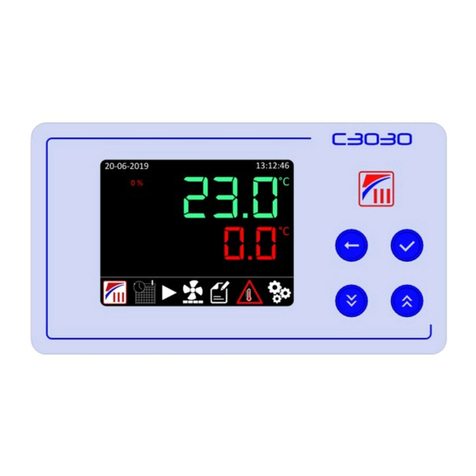
FRANCE ETUVES
FRANCE ETUVES C3030 Original instructions
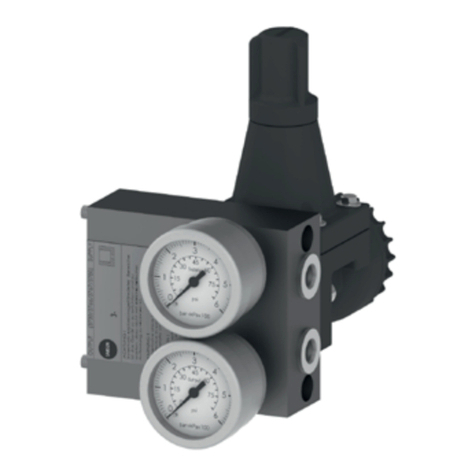
Samson
Samson Type 4708 Mounting and operating instructions
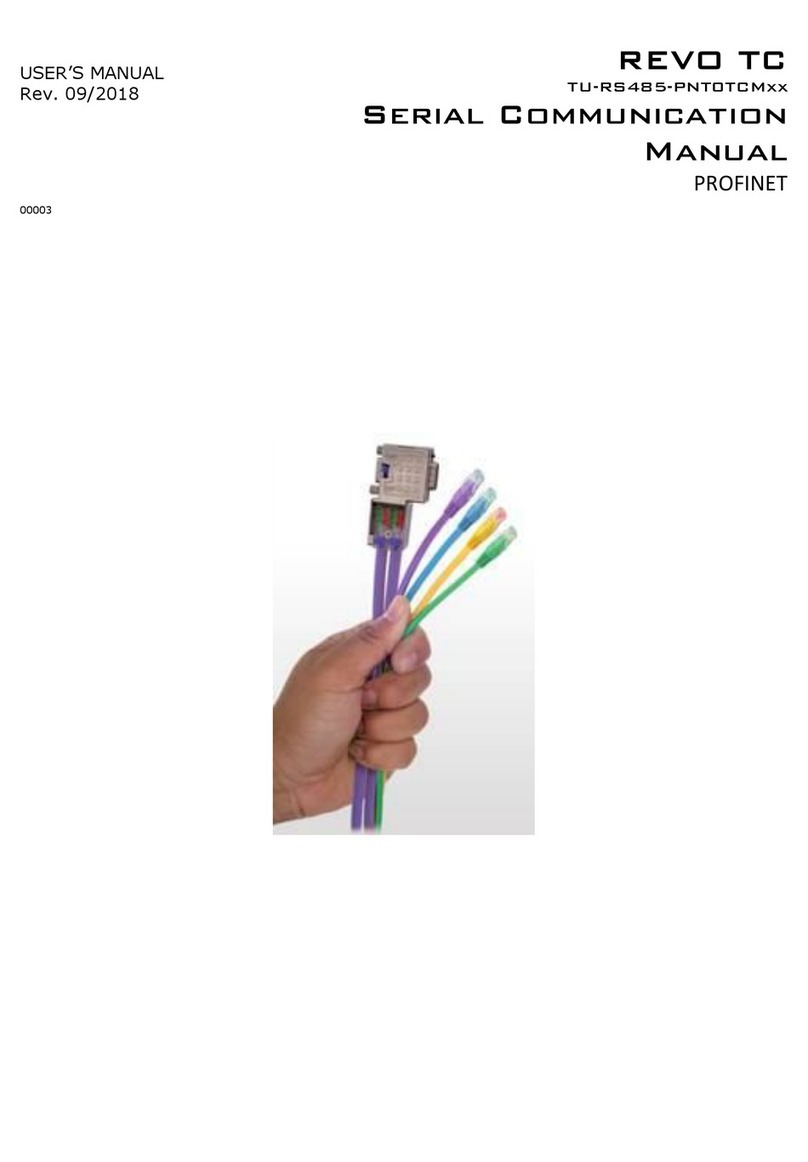
CD Automation
CD Automation Revo TC Communications manual
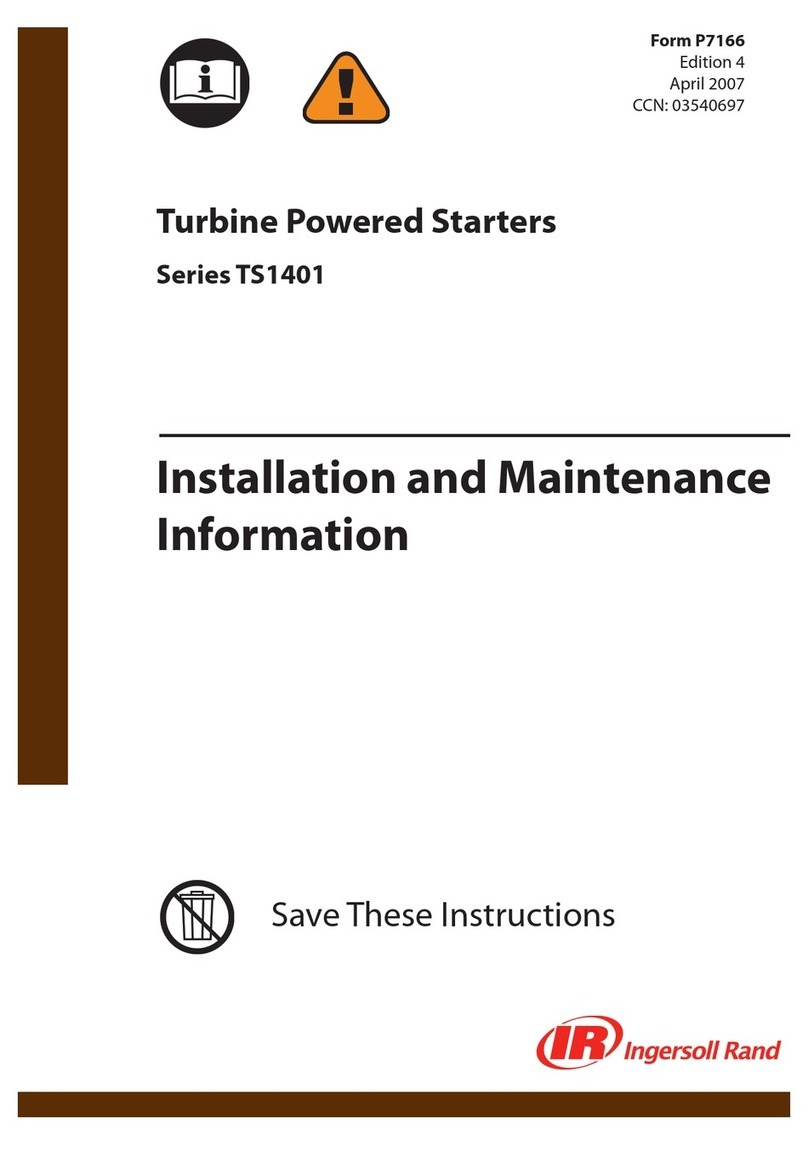
Ingersoll-Rand
Ingersoll-Rand TS1401 Series Installation and maintenance information
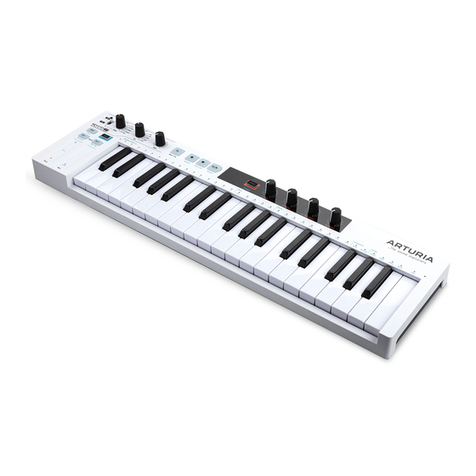
Arturia
Arturia Keystep manual
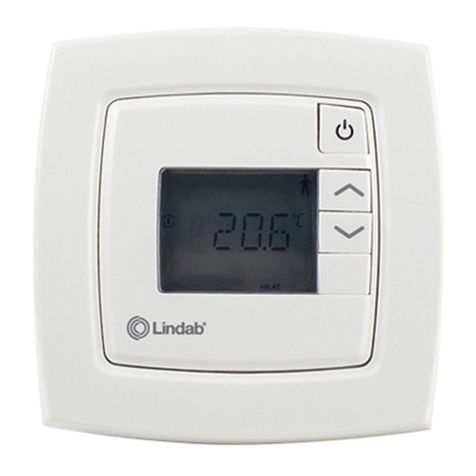
Lindab
Lindab Regula Combi Installation
